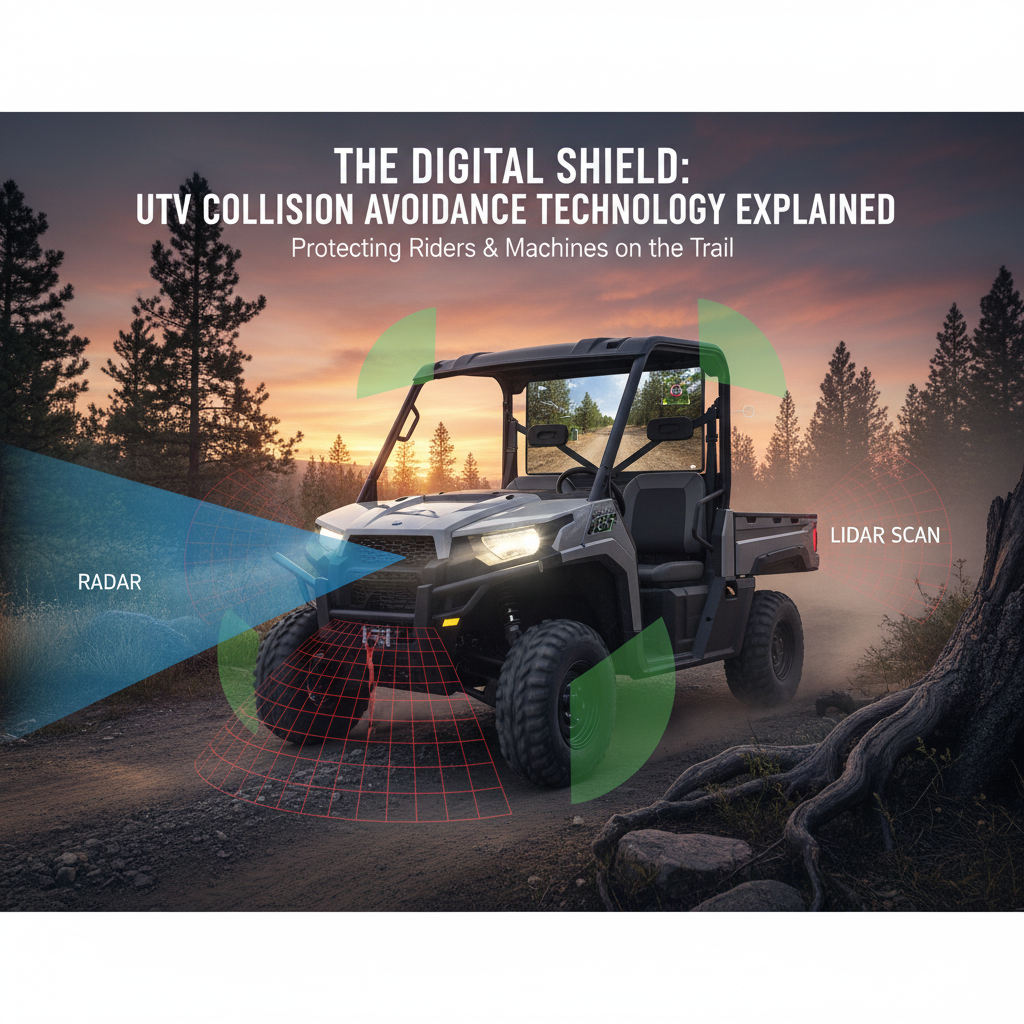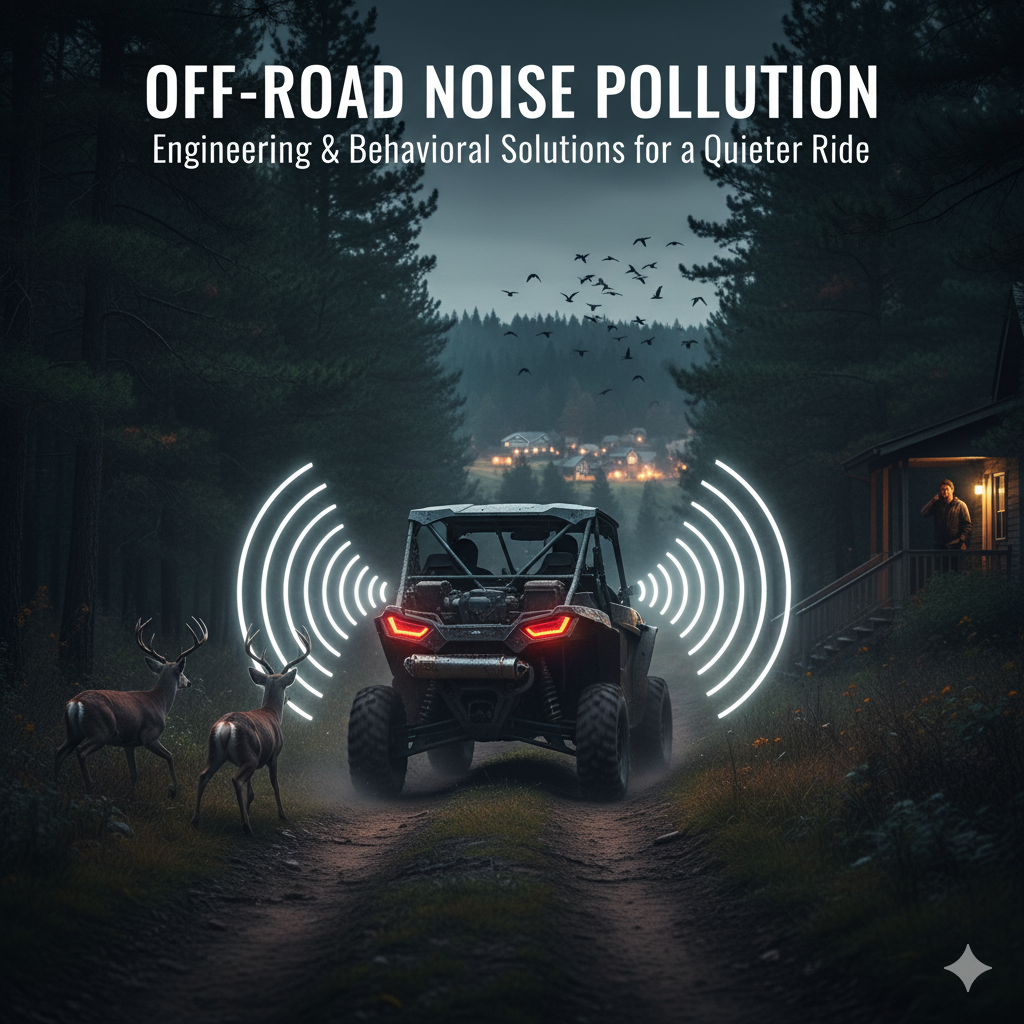For most off-road enthusiasts, the UTV is a machine built for adrenaline—for conquering dunes, crawling over rocks, and splashing through mud. But the versatility of the side-by-side is opening up a new, profound dimension to the sport: UTV cultural heritage tours. These tours are transforming the way we access and appreciate remote historical sites, ancient ruins, and culturally significant landscapes that are often inaccessible by traditional vehicles.
The UTV, with its rugged capability and relatively small footprint, is proving to be the perfect vehicle for responsible, educational tourism.
It allows us to venture deep into areas where history lies hidden, from ancestral Puebloan ruins in the American Southwest to remote plantation lands in Hawaii.
However, this privilege comes with a profound responsibility: to ensure that our pursuit of adventure does not compromise the very heritage we seek to explore.
In this comprehensive guide, we will explore the growing trend of UTV cultural heritage tours.
We’ll look at where these tours are taking place, the unique benefits they offer, and, most importantly, the strict guidelines and best practices that must be followed to ensure we are explorers, not destroyers, of the past.
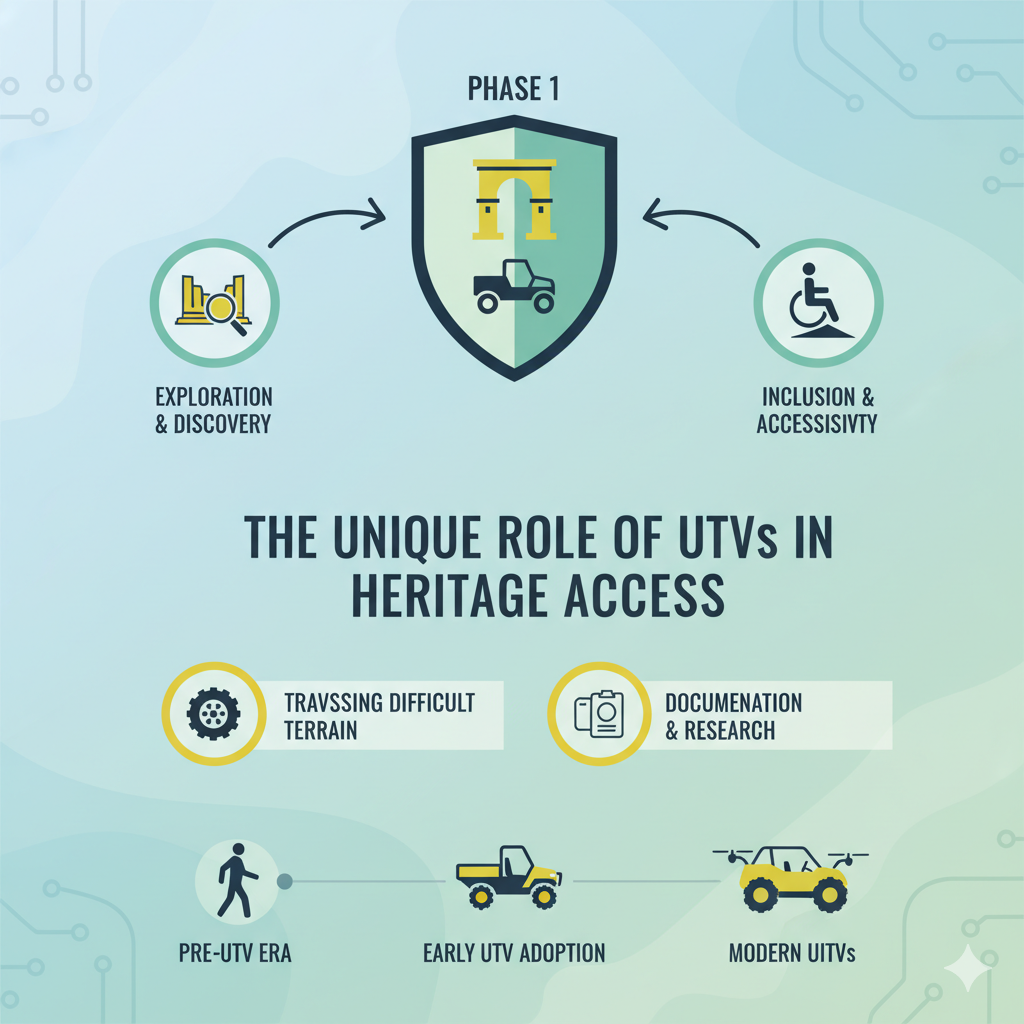
Phase 1: The Unique Role of UTVs in Heritage Access
Why are UTVs becoming the vehicle of choice for accessing cultural heritage sites? The answer lies in their perfect balance of capability and size.
Reaching the Unreachable
Many significant historical and archaeological sites were intentionally built in remote, defensible, or hidden locations, making them difficult to reach today.
- Overcoming Terrain: UTVs can navigate rough, unpaved, and rocky terrain that would be impossible for a standard passenger vehicle and too time-consuming for hiking. This allows for efficient access to sites deep within canyons, mountains, or deserts.
- Reduced Infrastructure Impact: Unlike building paved roads or large parking lots, which can permanently alter a landscape, UTVs utilize existing, often primitive, trails. This minimizes the permanent infrastructure required for access.
A More Immersive Experience
UTV tours offer a blend of adventure and education that is hard to match.
- Guided Interpretation: Tours are typically led by knowledgeable guides, often archaeologists, historians, or members of local indigenous communities, who provide context and interpretation of the sites. This turns a simple ride into a deep learning experience.
- Connecting with the Landscape: The open-air nature of a UTV allows riders to be fully immersed in the environment, feeling the history and connecting with the landscape in a way that a closed vehicle cannot offer.
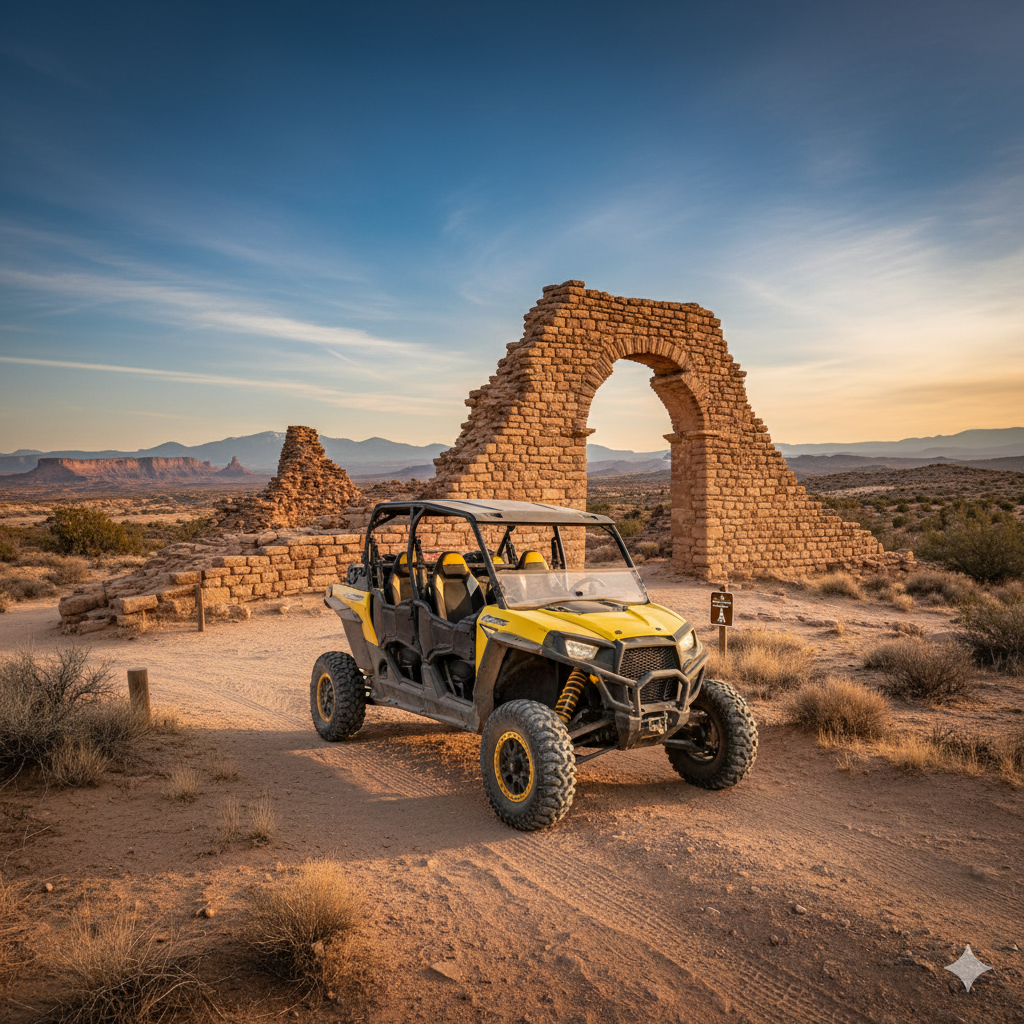
Phase 2: Case Studies in UTV Heritage Tourism
Across the globe, UTVs are being used to unlock access to fascinating cultural sites.
The American Southwest: Ancient Ruins and Rock Art
The desert landscapes of Arizona, Utah, and New Mexico are rich with the history of ancestral Puebloan and Hohokam cultures.
- Hohokam Ruins Tours: In Arizona, guided UTV tours take riders to remote Hohokam ruins, offering a glimpse into the lives of people who inhabited the area centuries ago. These tours often follow designated UTV-only trails to protect the fragile desert environment.
- Bears Ears National Monument: While access is highly regulated, UTVs and 4WD vehicles are essential for reaching some of the more remote ancestral sites and rock art panels in the Bears Ears region, providing a unique perspective on this sacred landscape.
Hawaii: Plantation History and Sacred Lands
In places like Hawaii, UTV tours often focus on more recent, yet equally important, cultural history.
- Kualoa Ranch and Farm Tours: On the islands, UTV tours often traverse former sugar cane or pineapple plantation lands, providing historical context on the agricultural and labor history of the region, alongside access to stunning natural beauty.
- Sacred Landscapes: Guides often share the cultural significance of the land, emphasizing the need for respect and preservation, turning the tour into a lesson in local heritage.
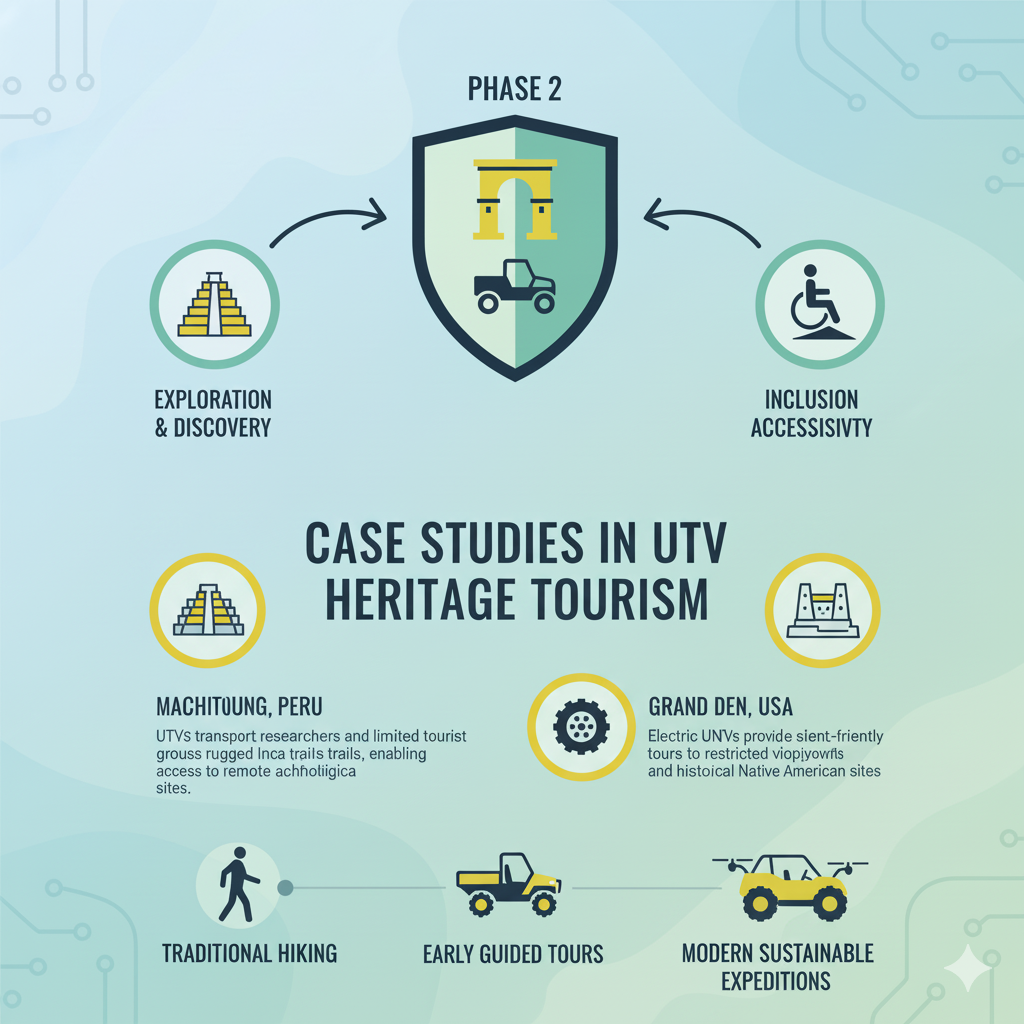
Phase 3: The Imperative of Responsible UTV Tourism
The biggest challenge for UTV cultural heritage tours is balancing access with preservation. The mantra must always be “Tread Lightly.”
The “Leave No Trace” Ethos
The core principle of responsible heritage tourism is to leave the site exactly as you found it, or better.
- Stay on Designated Trails: This is the single most important rule. Off-trail riding can cause irreparable damage to archaeological sites, fragile desert crusts, and native vegetation.
- Respect Artifacts: Never touch, move, or collect artifacts, pottery shards, or rock art. These items are protecte by law and are essential to understanding the history of the site.
- Pack It In, Pack It Out: All trash, including organic waste, must be remove.
Working with Local and Indigenous Communities
True cultural heritage tours must be done in partnership with the communities whose history is being share.
- Authentic Interpretation: Tours led or sanctions by local indigenous groups ensure that the history is told accurately and respectfully, providing an authentic and meaningful experience for the visitor.
- Economic Benefit: Ensuring that the economic benefits of the tourism flow back to the local and indigenous communities helps fund preservation efforts and supports the people who are the true stewards of the land.
| Responsible Tourism Practice | Why It Matters for Heritage Sites | UTV Modification/Action |
|---|---|---|
| Trail Adherence | Prevents damage to fragile archaeological sites and vegetation. | Use GPS to track route; install fender flares to contain mud/rocks. |
| Artifact Respect | Preserves historical context and complies with federal law. | Educate riders before the tour; never touch or remove anything. |
| Noise Reduction | Minimizes disturbance to wildlife and other visitors. | Install an aftermarket quiet exhaust system. |
| Community Engagement | Ensures respectful and accurate historical interpretation. | Choose tours led by local or indigenous guides. |
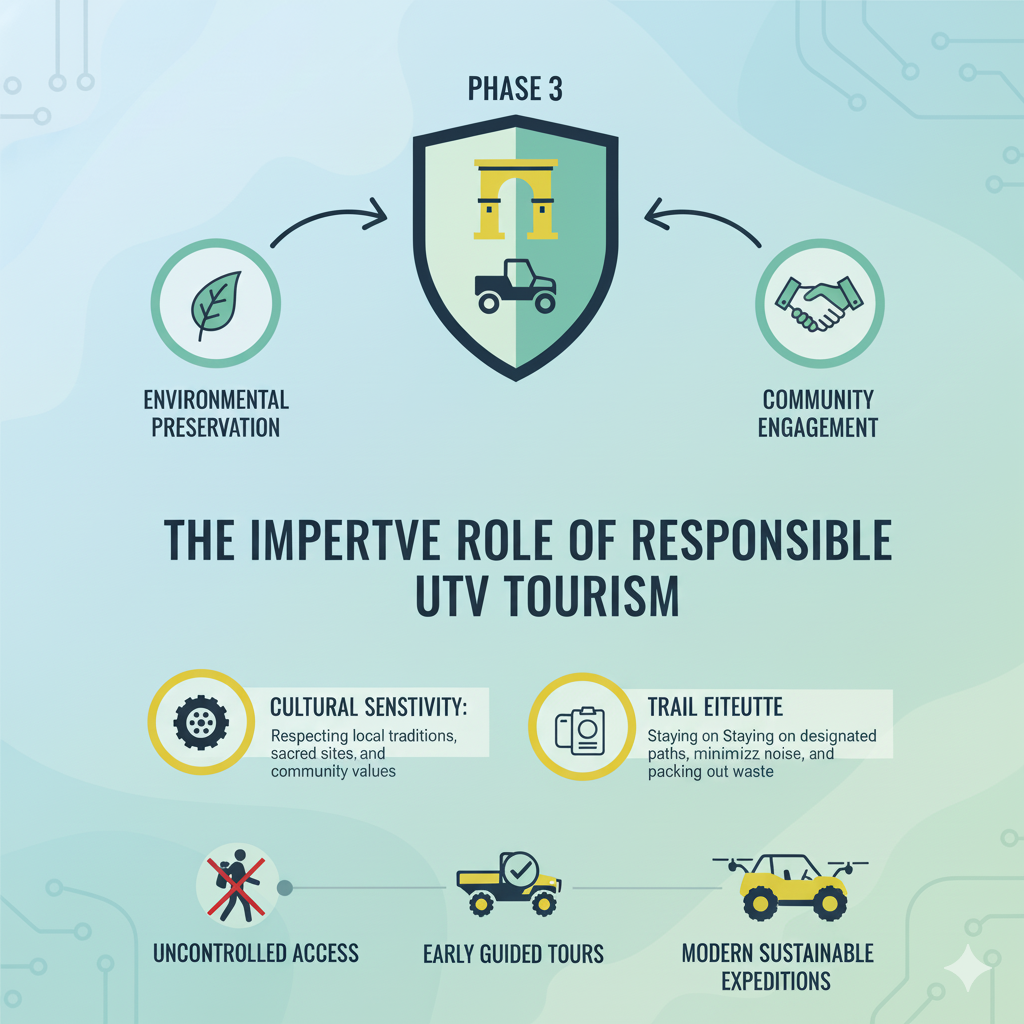
Phase 4: Planning Your UTV Cultural Heritage Tour
If you are planning a UTV cultural heritage tour, whether guided or self-guided, preparation is key.
Research and Permits
- Identify the Land Manager: Determine if the site is manages by the Bureau of Land Management (BLM), the National Park Service, a State Park, or a Tribal authority. Each will have different rules and permit requirements.
- Check OHV Regulations: Verify that UTVs are permittee on the specific trails leading to the site. Many historical areas have strict restrictions on motorized access.
- Hire a Certified Guide: For the most meaningful and responsible experience, book a tour with a company that specializes in cultural heritage and employs certified, knowledgeable guides.
UTV Preparation
Your UTV needs to be prepares for responsible, long-distance travel.
- Maintenance Check: Ensure your UTV is in top mechanical condition to prevent breakdowns that could lead to resource damage during recovery.
- Secure Storage: Use secure, dust-proof storage for all gear, food, and trash.
- Emergency Gear: Carry a comprehensive first-aid kit, a fire extinguisher, and a communication device (satellite messenger or radio) as these remote sites often lack cell service.
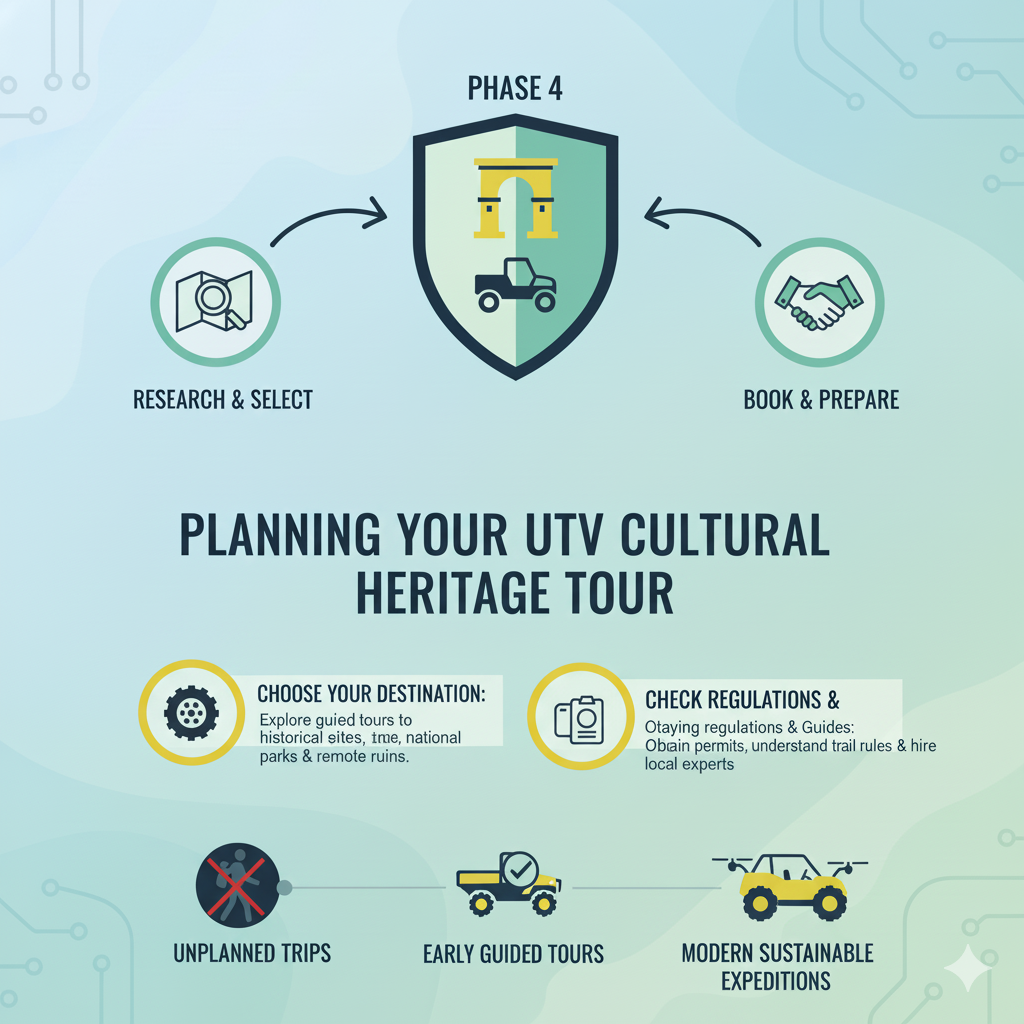
Conclusion: The Journey is the Lesson
UTV cultural heritage tours represent the best of what off-roading can be: a powerful tool for exploration, education, and connection.
By using our UTVs not just for sport, but as a means to respectfully access and learn from the past, we elevate the entire off-road community.
The next time you fire up your side-by-side, consider pointing it toward a trail that leads to history.
With a commitment to responsible riding and a thirst for knowledge,
you can ensure that your adventure is not only thrilling but also a meaningful contribution to the preservation of our shared cultural heritage.
Respect the past, preserve the future, and ride responsibly!
References
[1] De Palm Tours – Ultimate UTV Adventure (Aruba)
[2] BLM – Off-Highway Vehicles on Public Lands
[3] Kualoa Ranch – Hawaii’s Premier Adventure Destination
[4] AZ Outdoor Fun – Ancient Ruins Guided UTV Tour
[5] Canyonlands By Night – Native American Archaeology Tour












